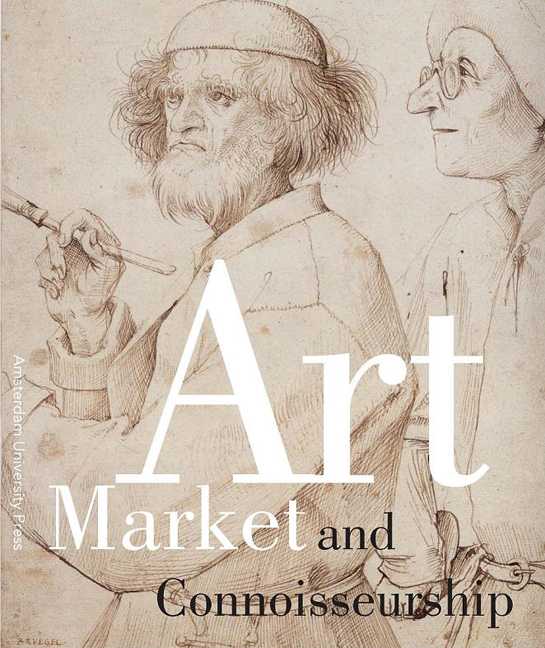 Art Market and Connoisseurship
Art Market and Connoisseurship The Rise of the Dealer-Auctioneer in Paris: Information and Transparency in a Market for Netherlandish Paintings
Published online by Cambridge University Press: 15 January 2021
Summary
Dealer-auctioneers and connoisseurs
Records indicate that specialist dealers have been operating as intermediaries in markets for paintings since at least the early sixteenth century. Throughout much of that long period, dealers served connoisseurs, who assumed, by virtue of their inherited status and wealth and the leisure and education both afforded, the role of arbiter in determining quality, and taste in the collecting of artworks. During the sixteenth and seventeenth centuries, however, commercial wealth in the Low Countries, began to shift some of that role to specialist dealers; and, during the eighteenth century, in Paris, a new breed of dealer, whom we shall call the dealer-auctioneer, further displaced the connoisseur.
That there was a change can be inferred from the increases in sales held and collections formed. The number of sales in Paris rose from c. 140 in the first half of the seventeenth century to c. 1,600 in the second half. Meanwhile, by Pomian's count, collections grew from 150 in the period 1700-1720, to more than 500 in the four decades immediately prior to the Revolution. These are striking increases. Nevertheless, to read displacement into these changes requires that we specify the change of roles assumed by dealers; or more precisely, successful appropriations of some of the distinctive roles previously associated with connoisseurship. We will try to do just that here.
We can trace this kind of realignment of roles in the moves of two key innovators among dealers: Edmé-François Gersaint, who operated from 1718 to 1750, and Jean-Baptiste Pierre LeBrun, who was active from 1763 to 1813. There were others of note as well. Gersaint stood out in the first half of the century, but Le Brun was merely first among his peers: he competed within a group of dealer-auctioneers who included Pierre Rémy, Alexandre Paillet and Pierre François Basan. We have not made a group study, so generalizations are inappropriate, but it is probably fair to consider Gersaint and Lebrun as prototypical in key respects. A sketch of contemporary developments in the art market will clarify what we have in mind.
Since the early 1990s, the leading international auction houses have been buying up galleries and dealerships, thus acquiring access to artwork and to additional clients and potential vendors, along with whatever privileged information is linked to both.
- Type
- Chapter
- Information
- Art Market and ConnoisseurshipA Closer Look at Paintings by Rembrandt, Rubens and Their Contemporaries, pp. 149 - 174Publisher: Amsterdam University PressPrint publication year: 2008


